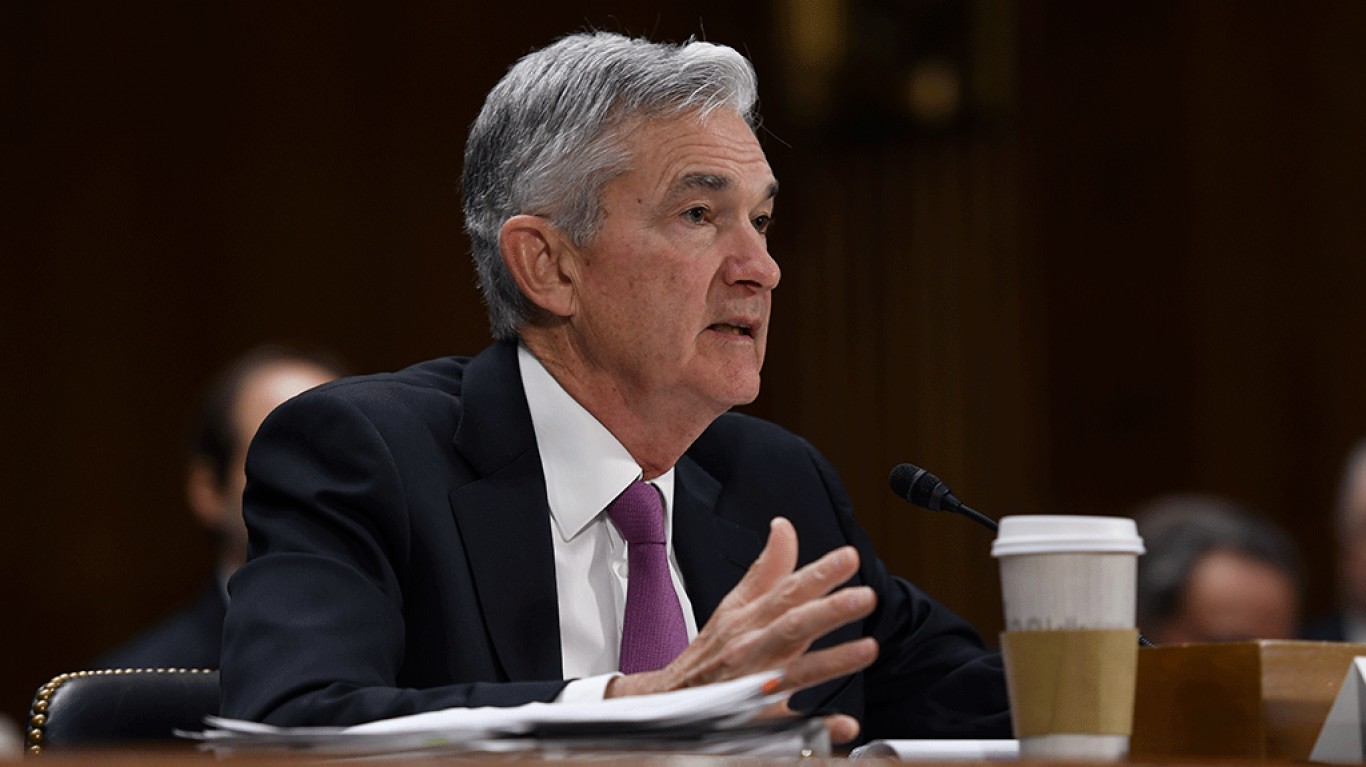

The Federal Reserve’s Open Market Committee (FOMC) left interest rates unchanged at the current funds rate of 5.25% to 5.50%. But Fed Chair Jerome Powell made it clear that, though rates will come down as inflation eases, neither rates nor inflation is expected to decline rapidly. As in, not less than three years.
In the printed summary of economic projections, the Fed expects median core PCE inflation to end the year at 3.7%, falling to 2.6% by the end of 2024 and only reaching the Fed’s often-stated target of 2% at the end of 2026. Headline PCE inflation is also projected to reach 2% in 2026.
The federal funds rate is expected to close 2023 at a median level of 5.6%, dipping to 5.1% at the end of 2024 but not falling to below 3% until 2026, when the median estimate slips to 2.9%. In June, the FOMC projected a median rate of 4.6% at the end of 2024 and 3.4% at the end of 2025 (projections for 2026 were not published until Wednesday’s meeting).
The U.S. economy may be in for a soft landing, but it is going to take time and interest rates are going to be higher for a lot of that time.
Business software platform Klaviyo Inc. (NYSE: KVYO) began trading Wednesday after setting an IPO price of $30 per share on Tuesday. Shares opened at $36.75 and reached a high of $39.47 before falling back to close at $32.76.
Instart (Maplebear Inc.) (NASDAQ: CART) priced its Tuesday IPO at $30 a share, and shares opened Tuesday morning at $42. The stock topped out at $42.95 before closing at $33.70. On its second day of trading, Instacart shares dropped 10.7% to close at $30.10.
Arm Holdings PLC (NASDAQ: ARM) priced its IPO last Thursday at $51, and shares jumped to $69 on Friday, before dipping sharply and closing at $60.75 on the day. The shares closed at $52.91 Wednesday.
As we noted before Klaviyo began trading Wednesday, Arm may have been a must-own stock at the time of its IPO, but Instacart, and now Klaviyo, were not. None of the three is likely to be indispensable to investors.
In premarket trading on Thursday, Arm shares traded down about 2.8% at $51.41, Instacart traded down by about 1.2% at $29.75, and Klaviyo traded down 3.6% at $31.58.
Even before the U.S. Energy Information Administration released its weekly petroleum status report Wednesday morning, crude oil prices began pulling back from the daily high of $91.09 a barrel. Just minutes after the report was released, West Texas Intermediate traded at about $90.50. The FOMC announcement at 2 p.m. caused only a brief pause in a crude price slide that cut the closing price to around $89.40. WTI traded at around $88.75 early Thursday.
Commercial crude inventories fell by 2.1 million barrels last week, gasoline inventories fell by 800,000 barrels and distillate fuels like diesel and heating oil saw inventories drop by 2.9 million barrels. The Strategic Petroleum Reserve added 600,000 barrels to its cache last week, raising its level to 351.2 million barrels.
Higher interest rates for longer mean higher borrowing costs for producers and lower dividends and buybacks for investors. Both Exxon Mobil and Chevron closed lower Wednesday and traded lower again in Thursday’s premarket.
Crude prices have been getting a boost from cuts to production by the Russians and the Saudis, and from hedge funds and other speculators that have been gobbling up crude futures contracts, betting that crude will soon reach $100 a barrel. That means a tidy profit for all those long bettors. Here is how Wednesday’s Financial Times reported the effect of hedge funds on oil prices:
Exchange and regulatory data suggested hedge fund positioning had exacerbated the near 30 per cent move higher in prices since June, with a surge in buying accelerating in the past two weeks for both Brent and US crude futures.
The latest data showed that the combined fund net long position in Brent and West Texas Intermediate, the US benchmark, jumped by 137,000 contracts, or 35 per cent, to an 18-month high of 527,000 contracts in the two weeks to September 12.
The figures [are] equivalent to more than 500mn barrels or about five days worth of global demand …
According to GasBuddy, Thursday morning’s national average price for a gallon of regular gasoline was $3.85, up $0.014 since last week and up $0.18 per gallon year over year. A gallon of gas in California now costs $5.73. Mississippi has the lowest price at $3.26 per gallon. Gas prices remain near their highest national average for this year of $3.86 per gallon.
Sponsored: Attention Savvy Investors: Speak to 3 Financial Experts – FREE
Ever wanted an extra set of eyes on an investment you’re considering? Now you can speak with up to 3 financial experts in your area for FREE. By simply
clicking here you can begin to match with financial professionals who can help guide you through the financial decisions you’re making. And the best part? The first conversation with them is free.
Click here to match with up to 3 financial pros who would be excited to help you make financial decisions.
Thank you for reading! Have some feedback for us?
Contact the 24/7 Wall St. editorial team.
 24/7 Wall St.
24/7 Wall St.


